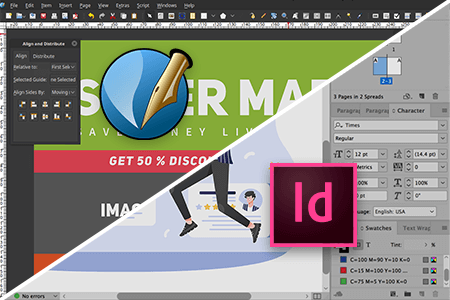

- AFFINITY PUBLISHER VS SCRIBUS HOW TO
- AFFINITY PUBLISHER VS SCRIBUS SOFTWARE
- AFFINITY PUBLISHER VS SCRIBUS WINDOWS
Read next: 3 Open Source Desktop Publishing Tools for Small Businesses

AFFINITY PUBLISHER VS SCRIBUS SOFTWARE
Then, sign up for a demo or a free trial to be sure you’ve made the right choice before committing to one desktop publishing software solution. Consider your long-term needs-including features, OS support, and cost-when narrowing down your list of DTP vendors. These are our picks for the top small business desktop publishing applications, but you may be unsure of which one is best for you.
AFFINITY PUBLISHER VS SCRIBUS HOW TO
How to choose the best desktop publishing software Quark’s pricing structure is a bit more confusing than other vendors, and you might have some sticker shock when comparing costs. This means you can get more done for your project without opening a new application and slowing down your computer. Plus, many of the features that are typically found in other apps for photo editing or illustrating are embedded directly into the QuarkXPress platform. Unlike many of its competitors, Quark is easy to use for beginners and includes support for a variety of multimedia elements like audio, video, animations, and 3D modeling.
AFFINITY PUBLISHER VS SCRIBUS WINDOWS
It’s available for Windows or macOS devices, and it can import and export a wide range of file types. Somebody has to spend the man-hours (like Adobe has done), to copy such specific features.Last but not least, QuarkXPress is one of the most feature-rich desktop publishing software applications on the market. Python plug-ins can be created, as Scribus is open and if this is really important to you, it can be done. If you want to have total control and you want to achieve special padding, then you will not find automatic settings in Scribus. The vertical padding given by Scribus is rather close to the InDesing examples you are showing and is "nicer" than the Affinity Publisher or Google Slides examples you show as inacceptable for you. In your question you are showing a classic vertical padding. If you need even more control, please edit your question re how and why. The horizontal padding in your InDesign example is not symmetrical right versus left. You have a large range of different spaces available for this, and the "advanced settings" in the Text Properties tool. You might consider trying Scribus again and using spaces to control your horizontal colour padding to any precise custom value. It very common that the answer to the question do X in Y is unsatisfactory due to the randomness of feature sets. This is just the border of what you can expect traditional top down software model to do for you. I this critical for any of those applications? No, even InDesign couldn't do this for ages! So roll back 3 years and even InDesign couldn't.

Software implement what they implement if you want something that you can extend use something designed to extension. Why would this particular effect be any more important than: sure however its still just any of the millions of possible effects. Due to the software you have picked you could also use stuff like imagemagic etc etc. Just that those would't fulfill your expectations of easiness because they are generally geared to be harder to use due to extensibility and dont fill your expectations. You can also do this within the normal usability parameters of something like blender or maya. I mean you could easily do this in open ended software like Tex. So what is the purpose of the comparison. Also i dont think the HTML version is too complex. Being able to do this in krita is not useful for DTP like scribus is because its pixel based. I'm stunned that such simple option is so hard to achieve. I've also checked Gravit, Canva, Vectr and gazillion more different apps. Worth mentioning is a fact that this do not work in Text Frame but it works ok in. Adding images, page backgrounds and cropping them in Writer is pure nightmare. Because your data belongs to YOU Most proprietary DTP programs store data in binary file formats that can’t be read by most human beings.


 0 kommentar(er)
0 kommentar(er)
